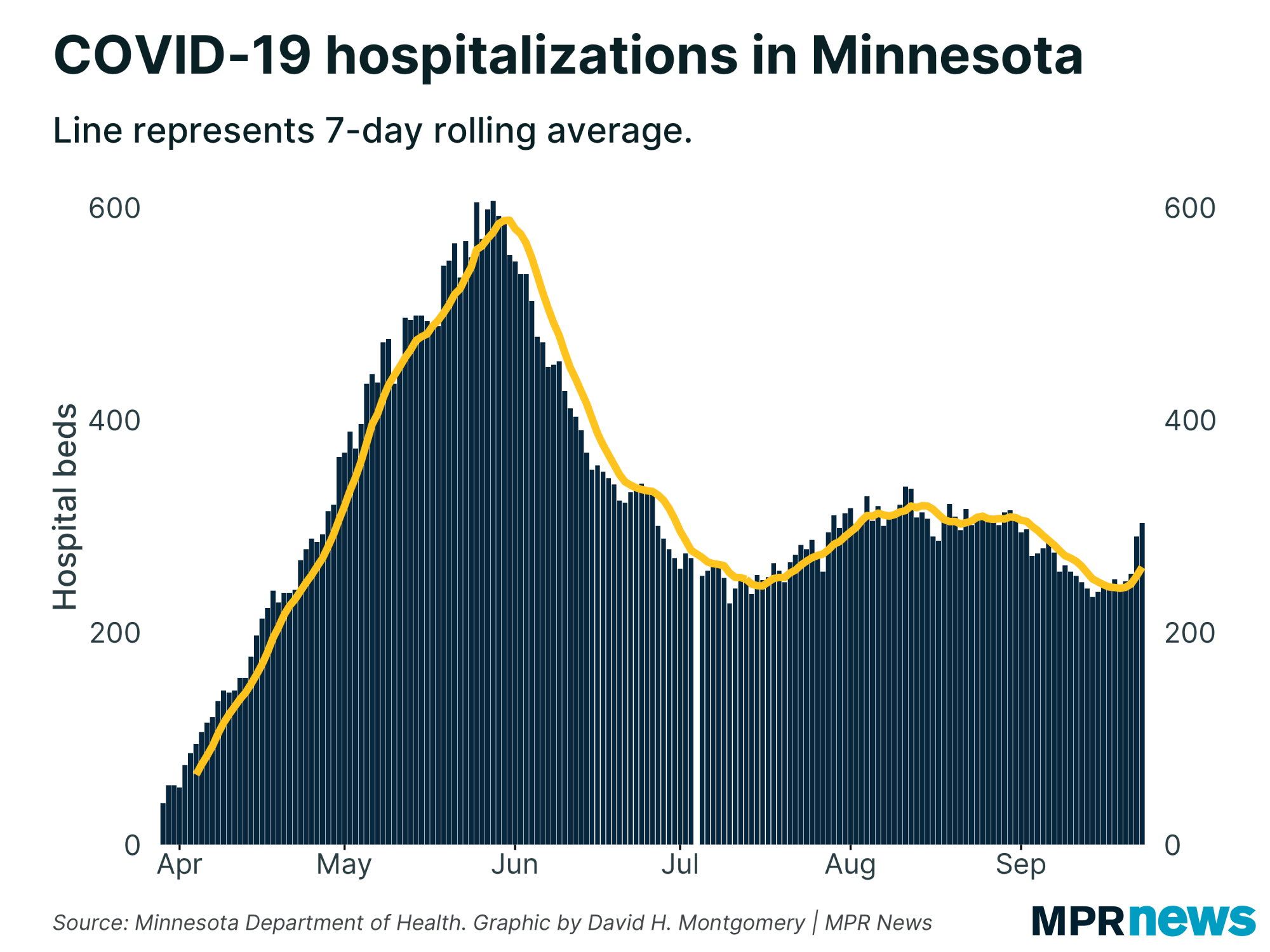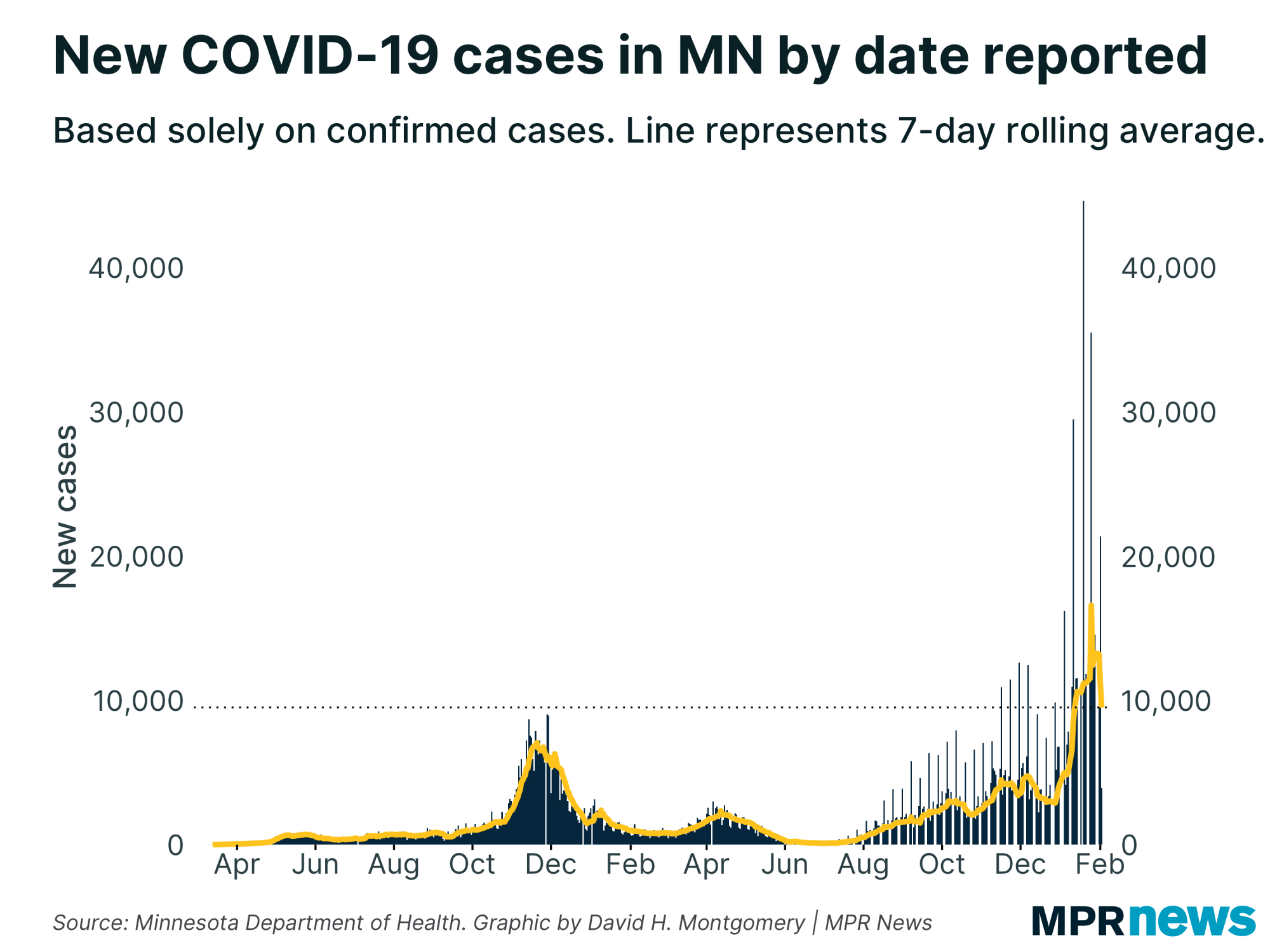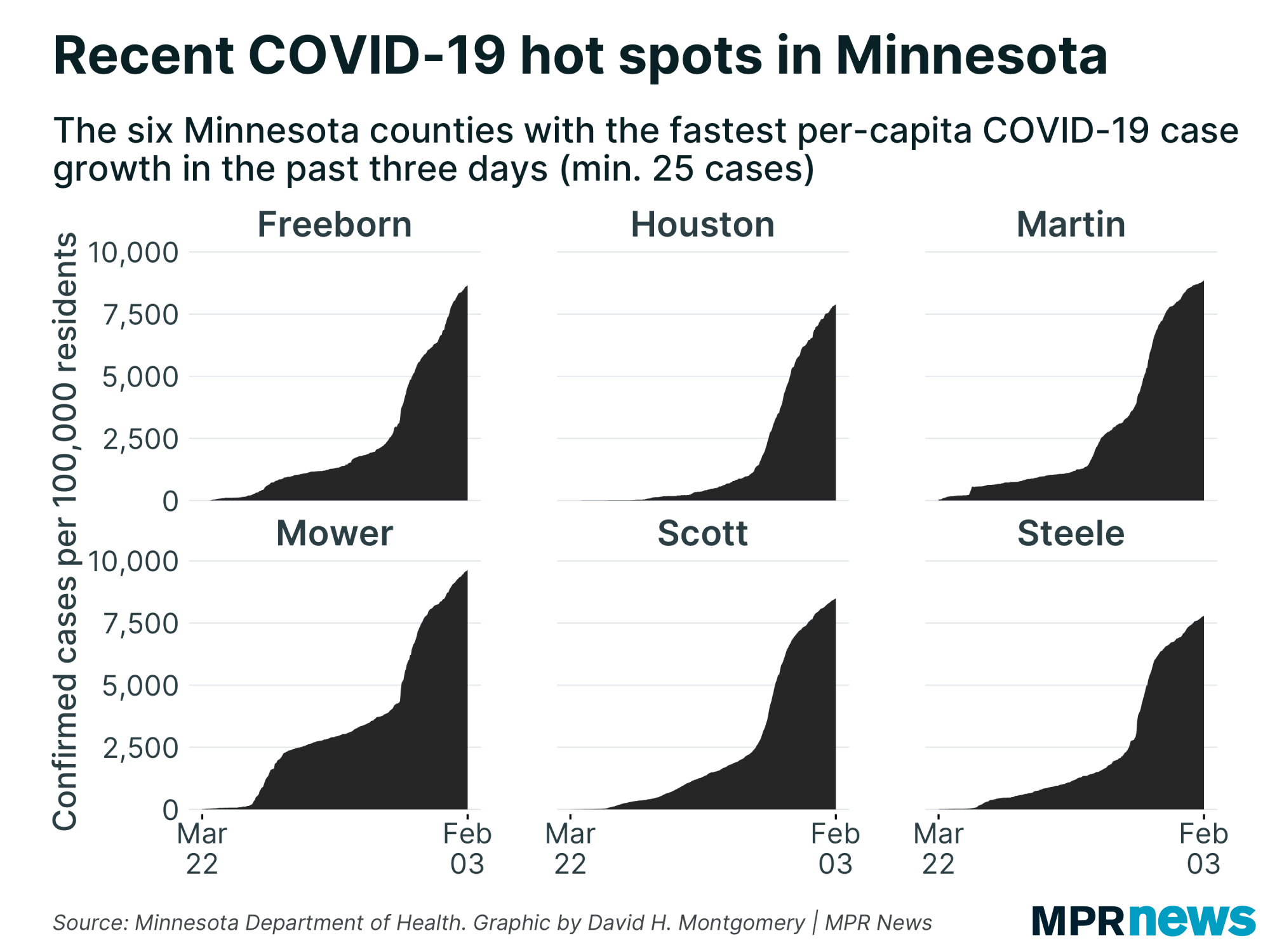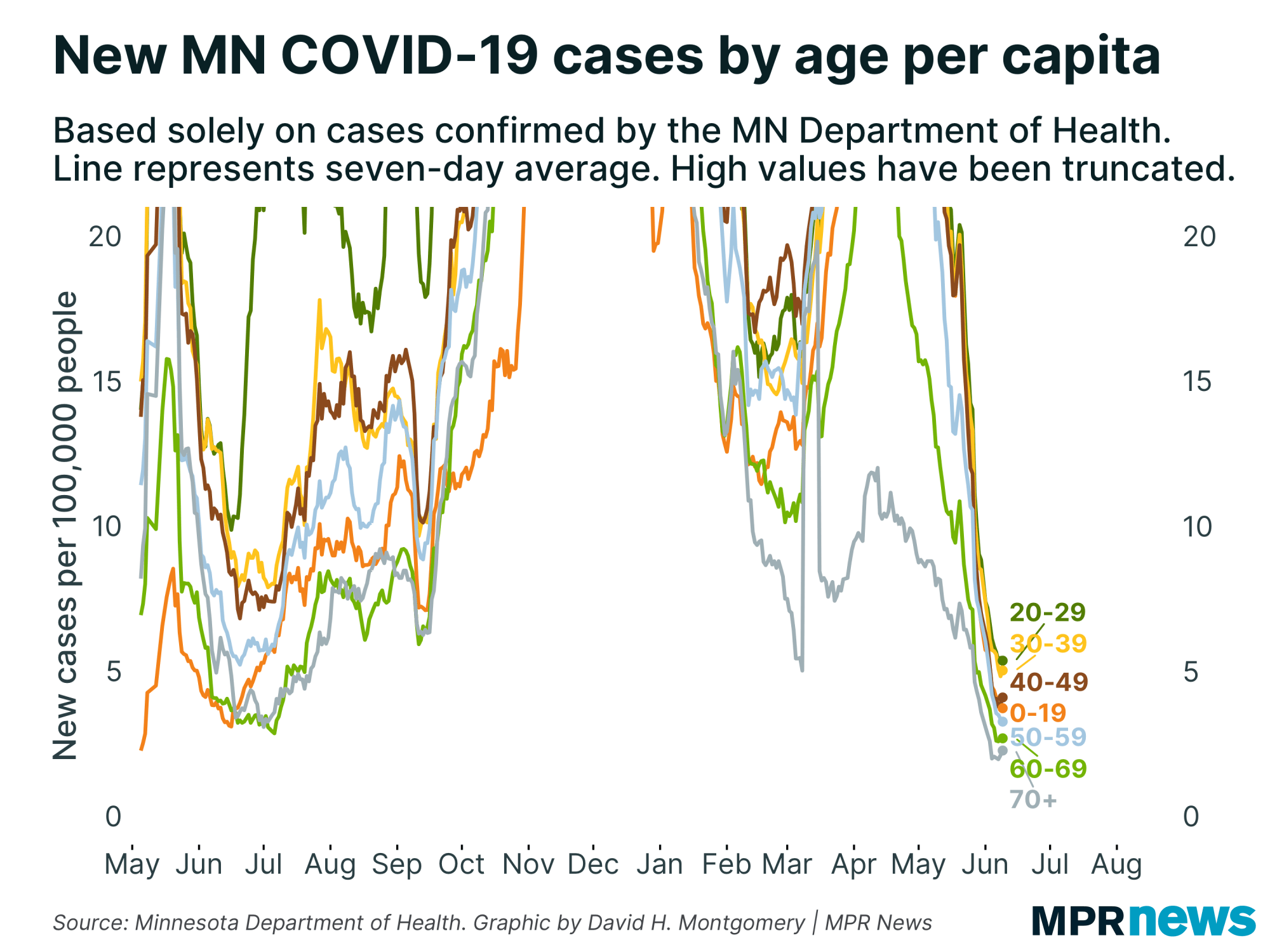Aug. 21 update on COVID-19: 15 cases tied to Sturgis, more expected

Go Deeper.
Create an account or log in to save stories.
Like this?
Thanks for liking this story! We have added it to a list of your favorite stories.
Updated 6:16 p.m.
State health officials have worried for weeks about Minnesotans carrying COVID-19 back from the massive motorcycle rally in Sturgis, S.D. On Friday, they confirmed that Sturgis cases are surfacing.
Minnesota has 15 known cases now among those who traveled to the rally, with one person hospitalized, Kris Ehresmann, the state’s infectious disease director, said Friday. Fourteen of those infected were attendees who’d said they’d been to multiple campgrounds and bars around the Black Hills town; one was a temporary employee at a bar.
Ehresmann said officials expect “additional cases in the coming days” in Minnesota stemming from the Aug. 7-16 rally and urged anyone who went to self-isolate for 14 days, get tested if they don’t feel well and stay home until they get the test results.
The rally drew some 460,000 people from across the country. Most people didn't take significant precautions against COVID-19 infections. A few people wore masks and some said they were avoiding crowds, but many others packed close together at bars and rock shows.
Turn Up Your Support
MPR News helps you turn down the noise and build shared understanding. Turn up your support for this public resource and keep trusted journalism accessible to all.
Minnesota Health Commissioner Jan Malcolm had repeatedly expressed concerns that Sturgis would be a petri dish for the disease. She said was disappointed South Dakota had OK’d the rally given that it would attract people from around the country, including places where COVID-19 cases were climbing.
Sturgis, she said as the rally kicked off, will be a “pretty ripe environment for further spread.”
The South Dakota Department of Health warned on Tuesday that one person who spent several hours at a bar on Main Street in Sturgis has tested positive for COVID-19 and may have spread it to others. It’s not clear if that case was connected to the Minnesota cases.
ICU cases fall in latest data
The Sturgis confirmations came hours after the Health Department Friday data release offered another round of hope and worry around COVID-19.
The count of new confirmed cases of the disease (835) continues to rise steeply, but the number of people needing intensive care fell to its lowest level in nearly a month.
Current hospitalizations and ICU needs are two closely watched metrics as officials work to manage the spread of the disease. ICU cases dropped to 136 on Friday while the total hospitalization count came in at 296 patients.

After climbing in July, the count has flattened during August at a relatively high level — more than 300 daily cases on average. But it remains far below a late-May peak.

Of the 68,133 total confirmed cases of the disease since the pandemic began, about 89 percent have recovered to the point where they no longer need to be isolated.
The state recorded eight more deaths, putting the toll at 1,753 people confirmed to have died from the disease in Minnesota. About 74 percent of those who died had been living in long-term care or assisted living facilities.

“The way out of this mess is clear,” Dr. Ruth Lynfield, the state’s epidemiologist, said Wednesday as she implored Minnesotans to wear masks in public indoor spaces, socially distance, stay away from large gatherings and get tested if you have COVID-19 symptoms.
“Health care professionals and health care providers have their roles to play — and so does every single Minnesotan. We need people to do the right thing.”
Southern Minnesota cases trending up
Regionally, the Twin Cities and its suburbs have been driving the counts of newly reported cases, although there’s an upswing now in southern Minnesota.
Northern Minnesota cases have been mostly on the rise since early July, although new counts have retreated in recent days. Beltrami County, home to Bemidji, has seen a steady climb the past few weeks. The county reported 287 cases and one death as of Friday.
Meatpacking operations had been hot spots for big outbreaks in southwest, west-central and central Minnesota earlier in the pandemic.

New cases have slowed considerably in recent weeks, although the problem has resurfaced recently in McLeod County (293 cases), where more than 20 employees at a Seneca Foods plant in Glencoe were identified recently in an outbreak.
Le Sueur and Waseca counties are also seeing big, recent case increases. Le Sueur showed 302 cases and two deaths as of Friday. Ehresmann said that while there’s been some workplace transmission of the disease, the jumps in those counties is due to community spread.
College concerns grow as fall semester nears
Worries continue about the growth of COVID-19 among younger Minnesotans, including that those infected will inadvertently spread the virus to grandparents and other more vulnerable people.
People in their 20s remain the age group with the highest number of COVID-19 confirmed cases in the pandemic — more than 15,500. The median age of cases is 36.

State health authorities on Friday urged parents and others to make sure children in their care are up to date in their immunizations.
They are also increasingly worried about college students joining end-of-summer parties and other gatherings that could feed the spread of COVID-19 and bring it onto campuses this fall.
Clusters of cases surfaced in late June around college bars, including in Mankato, Minneapolis and St. Cloud. Concerns over similar potential outbreaks are percolating again as the fall semester nears.
The Health Department this week posted additional guidance to colleges on ways to reduce COVID-19 risk.
Officials are asking students to self-isolate for two weeks before returning to campus, noting that the University of North Carolina, Notre Dame and Michigan State have been forced to retreat from their plans to teach in-person this fall amid campus outbreaks.

On Friday, state officials acknowledged their disappointment after 17 St. Olaf College students were suspended for being at an off-campus party without wearing masks or social distancing.
One student who went to the party was infected with COVID-19 and had close contact with several other partygoers.
So far, eight students have tested positive for the virus and 50 students are in quarantine.
The school has done nearly 3,500 tests of students, faculty and staff as they returned to campus. With more than 3,000 results back, 0.3 percent of the tests came back positive.
“It’s really disappointing to see this kind of behavior just as classes are beginning to start,” said Ehresmann, a St. Olaf graduate.
“I hope that for these students this is an opportunity to learn about the importance of how you make a difference in the community,” she said, “not only what you do in your careers but by the choices that you make.”
Developments from around the state
U of M president proposes online-only start to fall semester
University of Minnesota President Joan Gabel says she's proposing that undergrads at three U campuses — including the Twin Cities — begin classes online only for at least the first two weeks of school this fall.
The announcement on Friday comes in response to news that several colleges and universities around the country have had to cancel or pause their on-campus learning this week because COVID-19 is spreading among their students.
The proposal to mostly delay in-person undergraduate classes also includes Duluth and Rochester.
It would also delay move-in for students who live in on-campus housing.
The university's board of regents is expected to take up Gabel's proposal in a special meeting on Monday.
— MPR News staff
School guidance map shifts again
The evolving COVID-19 pandemic in Minnesota continues to change school reopening recommendations around the state.
In the latest batch of calculations released Thursday, 11 counties saw their recommendations change for the worse if school started today, away from in-person learning for all students, while six counties saw improvements.

St. Louis County, for example, had a two-week total of 7.6 new cases per 10,000 residents in last week’s update. In this week’s update, which covers from July 26 to Aug. 8, St. Louis County averaged 11.5 cases per 10,000 residents.
That changed the recommendation for schools there from in-person learning for all students to in-person learning for elementary students and a mix of in-person and distance learning for upper grades.
Officials say the school reopening recommendations from per-capita case figures are intended to be a starting point for decision-making, with the final calls made by school districts in consultation with the Department of Health.
There’s no geographic pattern to where counties are seeing their recommendations go up or down.
For example, among the nine counties in southwest corner of Minnesota, three saw their recommendation change for the worse in this week’s update, four saw improvements, and two stayed the same.
Overall, 51 counties with about 23 percent of the state’s population currently have a recommendation of in-person learning for all students. Another 26 counties with 32 percent of the state’s population are in the category of in-person learning for elementary students and hybrid learning for secondary students.
Nine counties have case levels high enough to suggest hybrid learning for all students in the Health Department’s rubric — but they include Hennepin, Ramsey, Dakota and Scott counties, and altogether cover 45 percent of the state’s population.
Just one county, Red Lake, is recommended to have elementary students do hybrid learning while secondary students do remote learning full time.
No counties currently have so many cases that they’d be recommended to have all students remote, if school started today.
— David Montgomery | MPR News
Mayo researcher: Clinic’s plasma program is promising, despite top health officials’ concerns
A researcher at Mayo Clinic says its COVID-19 plasma program is promising despite reports that senior U.S. health officials have privately expressed concerns.
The Rochester, Minn.-based clinic has been studying if plasma from people who've recovered from the coronavirus can be used to treat people who are suffering from it. A New York Times article reported some health officials believe the evidence for the treatments is not strong enough to qualify it for emergency use authorization by the FDA.
Mayo's Dr. Scott Wright told Morning Edition host Cathy Wurzer that data from the program can be used to support randomized clinic trials, which offer the highest standard of proof.
"I think the data we're gathering is foundational to help the people who are running trials understand more about where to focus their research efforts, what might be the appropriate treatment and control therapies,” Wright said.
He added that the program will continue until the FDA makes a decision about the emergency authorization or recommends its closure.
— Brandt Williams | MPR News
Need help with rent, mortgage? Here’s how to get it
Starting Monday, Minnesotans can apply for a slice of the $100 million in rent and mortgage assistance from Minnesota Housing.
The money is intended for Minnesotans who are financially struggling from COVID-19 and meet certain income requirements. Applicants can call 211 from 8 a.m. to 8 p.m.; staff speaking multiple languages will be on hand.
They can also text 211 and type “MNRENT,” or go online to 211unitedway.org. Once the process begins, applicants can track their status online.The $100 million dollars is from the federal CARES act and can help pay housing costs like rent, mortgage, lot fees in manufactured home parks, and utility payments.
While the money is for both homeowners and renters, Minnesota Housing Commissioner Jennifer Ho said she hopes homeowners are exploring all their options.
“We really encourage people who have a mortgage to reach out to their financial institution, and find out if they are eligible to get forbearance because a lot of financial institutions are offering the ability not to pay right away," Ho said.
— Melissa Townsend
St. Paul mayor’s budget plan includes hiring freezes, cuts to police
St. Paul Mayor Melvin Carter announced his budget proposal for next year amid economic uncertainty caused by the COVID-19 pandemic. Carter said pandemic response so far has cost the city $16 million.
The capital city got $23 million in federal CARES Act assistance related to COVID-19, almost half of which Carter plans to spend to help the growing homeless population.
"It's more visible today than ever because to maintain social distancing requirements our facilities, our homeless shelters have had to reduce their capacity by 50 percent,” he said.
The mayor said among departments facing budget cuts and a hiring freeze is the St. Paul Police Department — “because police and fire make up 51 percent of our general fund budget, there is no way to solve a budget crisis like this without some contribution from our police and fire departments," he said.
At the same time, shots fired in the city are up drastically compared to last summer.
The city has also spent $4 million responding to the civil unrest after the Memorial Day killing of George Floyd in Minneapolis.
Carter's proposed budget avoids city layoffs in favor of hiring and salary freezes and doesn't raise the property tax levy in the city next year because so many residents are already financially struggling during the pandemic.
City Council members have until December to tweak and pass the 2021 budget.
— Nina Moini | MPR News
Top headlines
Behind on rent? A new $100 million housing assistance program may help: Starting Monday, Minnesotans who are behind in their rent or mortgage can apply for housing assistance intended for those struggling financially because of COVID-19. But there will be challenges in getting the money into the hands of people who need it most, so officials want to enlist landlords to help get out the word.
U of M students brace for change when classes resume: As University of Minnesota students prepare for classes to begin in a couple of weeks, they know they are able to plan for only so much. Already some higher education institutions have had to abruptly stop in-person classes because of COVID-19 outbreaks.
Minnesota unemployment rate falls to 7.7 percent: In June, the state’s unemployment rate was 8.6 percent. Though Minnesota's jobless rate has been falling since hitting a record high in May, it remains more than double what it was before the COVID-19 pandemic began.
COVID-19 in Minnesota
Data in these graphs are based off Minnesota Department of Health cumulative totals released at 11 a.m. daily. You can find more detailed statistics on COVID-19 at the Health Department website.
The coronavirus is transmitted through respiratory droplets, coughs and sneezes, similar to the way the flu can spread.


